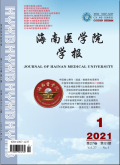海南医学院学报2024,Vol.30Issue(14):1111-1120,10.DOI:10.13210/j.cnki.jhmu.temp.20231126.003
TBI后应激性肠屏障损害的研究进展
Research progress on stress induced intestinal barrier damage after TBI
摘要
Abstract
Stress induced intestinal barrier damage after traumatic brain injury significantly increases the risk of mortality in pa-tients and seriously affects disease prognosis.However,the pathogenesis and treatment strategies are still not fully understood.This article aims to summarize the research progress on key issues such as the pathological mechanism and protective strategies of stress induced intestinal barrier damage in traumatic brain injury,it points out that increased permeability of intestinal epithelial cells,tight junctions,endoplasmic reticulum stress,autophagy,and ischemia-reperfusion injury may be the main mechanisms of intestinal barrier damage after traumatic brain injury.This article reviews the protective effects of vagus nerve stimulation,probiot-ics,exogenous supplementation of hunger hormone,and oxygen therapy on stress induced intestinal barrier damage after traumatic brain injury.This article will provide a new perspective and intervention targets for exploring precise and effective prevention and treatment of stress induced intestinal barrier damage after traumatic brain injury.关键词
创伤性脑损伤/肠屏障损害/病理机制/保护策略/研究进展Key words
Traumatic brain injury/Intestinal barrier damage/Pathological mechanism/Strategies for protection/Research progress/Summary分类
临床医学引用本文复制引用
叶敏,王涛,杨文菲,王丹心,周建,谭绍英,谢碧姣,李玉敏,许铃,孙海..TBI后应激性肠屏障损害的研究进展[J].海南医学院学报,2024,30(14):1111-1120,10.基金项目
This study was supported by the Natural Science Foundation of Hainan Province(822RC833) (822RC833)
Supported by the Hainan Natural Science Foundation of China(820RC622) (820RC622)
Supported by the Hainan Provincial Graduate Innovation Project Fund(Qhys2023-465)海南省自然科学基金资助项目(822RC833) (Qhys2023-465)
海南省自然科学基金资助项目(820RC622) (820RC622)
海南省研究生创新课题基金资助项目(Qhys2023-465) (Qhys2023-465)

